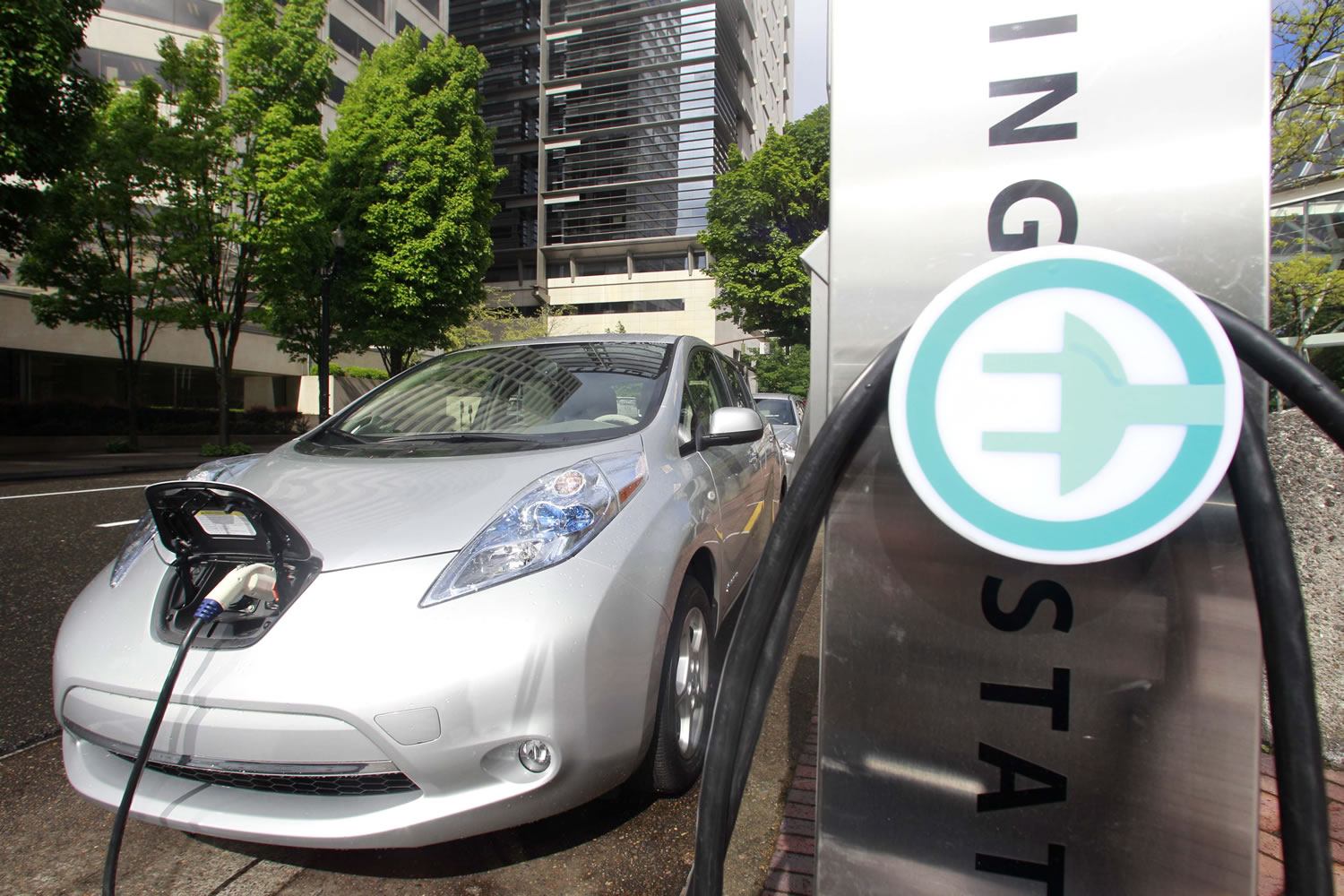A new electric vehicle charging station in Bellingham doesn’t mean much to a Southwest Washington driver now. With high-powered stations still few and far between in Washington, you’d be hard-pressed to get most electric vehicles that far north in a single trip.
The Washington State Department of Transportation hopes to change that by next spring. The Bellingham station — which broke ground this week — marks the first of six high-powered charging stations WSDOT plans to install along the Interstate 5 corridor between the Canadian and Oregon borders. Three others will land on state Highway 2, and another two on Interstate 90.
WSDOT hopes to have the system up and running, mostly in 40- to 60-mile intervals, by the end of March, said spokeswoman Tonia Buell.
“Things are starting to move along,” Buell said. “I think things are going to fall in line pretty quickly.”
That timeline is actually a delay from WSDOT’s original plans, which called for installing all the charging stations by now. But progress was delayed by logistical hurdles that include finding host sites, working out lease agreements and working with local utilities, Buell said. Plus, the two I-90 stations were
a recent addition. That boosted WSDOT’s total contract with California-based AeroVironment to just over $1 million for the project.
“This is something we’ve never tried before. It’s a unique concept and a unique partnership,” Buell said. “There’s so many steps that need to fall into place.”
AeroVironment has a similar contract to install eight charging stations in Oregon, Buell said, extending the corridor to the California border. The separate “EV Project” also aims to put thousands of stations across the country, including locations in the Portland and Seattle areas.
In Vancouver, city leaders are already adapting to what they see as a growing trend. The Vancouver City Council added language to the city code this month that specifically deals with electric vehicles and charging stations. The idea was to provide clarity and remove “regulatory barriers” in siting them, said planning review manager Chad Eiken.
Among the changes: Charging stations are allowed in any zoning district as long as they’re “accessory” chargers — that is, attached to an existing business or parking lot, for example. Stand-alone charging stations are allowed only in industrial and commercial zones. The city also allows vehicle charging areas to count toward the minimum number of parking spaces in a given lot.
City leaders did not, however, put rules on the size or shape of charging stations.
“We didn’t include any design standards, since it is kind of an evolving technology,” Eiken said. “We didn’t want to design it for the people who are going to put these in.”
Vancouver already has a handful of stations available for public use. Drivers can charge up at Clark Public Utilities’ headquarters or Legacy Salmon Creek Medical Center. Legacy added two Salmon Creek charging stations just this month, part of a company-wide effort that included several of its Portland-area hospitals. The Salmon Creek chargers were used about 10 times in their first two weeks of operation, according to Legacy spokeswoman Maegan Vidal.
Some urban locations offer “Level 2” charging stations, which take about four to six hours to charge most electric vehicles at 240 volts. Many electric-car owners also plug their cars in at home overnight — that’s a slower “Level 1” charge on a standard 120-volt outlet.
WSDOT’s high-powered freeway chargers are designed to work much faster. The stations going in along I-5 are DC chargers, sometimes called “Level 3,” which can charge a vehicle in as little as 30 minutes, Buell said. The kind of chargers for the rest of the locations haven’t been decided, she said.
Bellingham’s charging station will include both a Level 2 and a Level 3 plug-in, according to WSDOT. Plug-ins generally accommodate one vehicle each.
Electric vehicles aren’t used in huge numbers yet. Planners hope a robust system of charging stations might encourage more drivers to make the switch.
“I think people are sort of taking a wait-and-see approach,” Eiken said.
Eric Florip: 360-735-4541; http://twitter.com/col_enviro; eric.florip@columbian.com.




